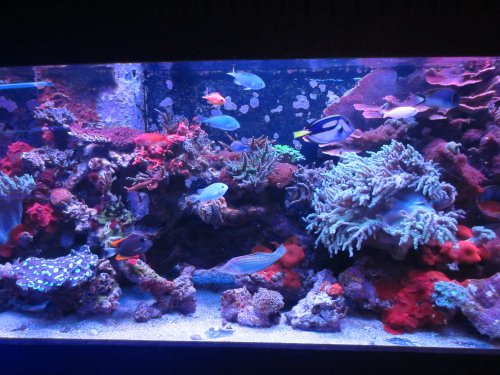-
Folks, if you've recently upgraded or renewed your annual club membership but it's still not active, please reach out to the BOD or a moderator. The PayPal system has a slight bug which it doesn't allow it to activate the account on it's own.
You are using an out of date browser. It may not display this or other websites correctly.
You should upgrade or use an alternative browser.
You should upgrade or use an alternative browser.
Copper treated equipment
- Thread starter MadReefer
- Start date
Vinegar bath/cleaning and you should be good.
Vinegar bath/cleaning and you should be good.
Agree with Paul but I *knock on wood* never had to do any copper treatments. To be safe I would clean it as Paul said above and then run it in a bucket of water or something for awhile and test the water with a copper kit just to make sure its copper free
I dissagree you never get the copper out once you use something for copper its no good for a reef tank
I dissagree you never get the copper out once you use something for copper its no good for a reef tank
That is incorrect. There are many tanks out there that have been exposed to copper treatments and are full blown reefs. This includes all equipment and all ROCK having gone through treatment. Not saying treat with copper and you can immediately add corals but it can be and has been done many times before...Perfect example is this aquarium

OK, here's the poop on copper. It really wouldn't stick to non reactive smooth surfaces. So things like glass or plastic, a wash in a mild acid (vinegar) will knock the copper right off. So glass or plexi tanks, glass heaters, plastic filters....all fine.
I appreciate @HerbieK success with rock from copper treatment, but would not recommend this unless that rock was repeatedly rinsed and ideally a copper absorbing product used to extract any copper. Rock just has too much porosity and "active" sites for copper to bind. It's similar to folks who acid dip rock (which I don't understand) to supposedly remove phosphates. What actually occurs is that any surface phosphates that get removed by the acid simply turn around and reattach to the freshly cleaned rock (unless a phosphate absorbing compound is used in conjunction with the acid....and who does that!)
I appreciate @HerbieK success with rock from copper treatment, but would not recommend this unless that rock was repeatedly rinsed and ideally a copper absorbing product used to extract any copper. Rock just has too much porosity and "active" sites for copper to bind. It's similar to folks who acid dip rock (which I don't understand) to supposedly remove phosphates. What actually occurs is that any surface phosphates that get removed by the acid simply turn around and reattach to the freshly cleaned rock (unless a phosphate absorbing compound is used in conjunction with the acid....and who does that!)

